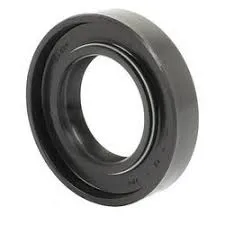10 月 . 02, 2024 10:53 Back to list
Cork Valve Cover Gasket Solutions for Engine Maintenance and Reliability
Understanding Cork Valve Cover Gaskets Essential Insights
Cork valve cover gaskets are a crucial component in the engine management system of many vehicles, especially those manufactured in earlier decades or particular makes that utilize this material for its sealing properties. These gaskets serve the primary purpose of sealing the joint between the valve cover and the cylinder head, preventing oil leaks, and ensuring that the engine operates efficiently.
What is a Cork Valve Cover Gasket?
Cork, a natural material harvested from the bark of cork oak trees, is known for its excellent compressibility, resilience, and ability to form a tight seal. In the context of valve cover gaskets, cork is often blended with rubber or other materials to enhance its durability, making it suitable for the demanding environment of an engine, which experiences significant temperature fluctuations and exposure to oil.
The gasket is typically shaped to match the contours of the valve cover and the cylinder head, providing an effective barrier that retains oil within the engine. This is critical because oil lubricates the moving parts of the engine, reducing friction and preventing wear, thereby extending the engine’s lifespan.
Benefits of Using Cork Gaskets
1. Flexibility and Compression Cork's natural ability to compress under pressure allows it to fill small gaps effectively, creating a reliable seal that prevents oil from leaking.
2. Heat Resistance Cork can withstand high temperatures, making it suitable for engine applications where heat is a constant factor.
3. Cost-Effectiveness Compared to synthetic alternatives, cork gaskets are often less expensive, providing a budget-friendly option for vehicle maintenance.
4. Ease of Installation Cork gaskets are lightweight and relatively easy to install, making them a popular choice for DIY mechanics.
cork valve cover gasket

Limitations of Cork Gaskets
While cork valve cover gaskets do offer several advantages, there are also some limitations to consider
1. Durability Over time, cork gaskets can degrade due to prolonged exposure to high temperatures and oil. They may become brittle and crack, leading to potential leaks. Regular inspection and maintenance are, therefore, crucial.
2. Compression Set If a cork gasket is compressed too much during installation, it can lose its ability to rebound and seal effectively, which may necessitate frequent replacements.
3. Oil Resistance Although cork has good oil resistance, it may not perform as well as some synthetic materials, which are specifically engineered for prolonged exposure to oil and heat.
Installation and Maintenance
When installing a cork valve cover gasket, it’s essential to prepare the surfaces properly. This includes cleaning the mating surfaces of the valve cover and cylinder head to remove any old gasket material, dirt, or oil. Applying a thin layer of gasket sealant can enhance the bond between the gasket and the surfaces, but caution is needed to avoid excessive amounts, which can lead to oozing and potential blockages.
After installation, monitoring for leaks is essential. If leaks appear, it may indicate that the gasket is worn or improperly installed, necessitating immediate attention. Regular maintenance checks, including oil level inspections and valve cover torque specifications, can significantly prolong the life of the gasket.
Conclusion
Cork valve cover gaskets are a reliable, traditional choice for many engines, offering a blend of affordability and performance. Understanding their properties, advantages, and limitations is crucial for anyone looking to maintain or repair their vehicle’s engine. With proper installation and regular maintenance, a cork valve cover gasket can contribute to a well-functioning engine, ensuring optimal performance for years to come. Whether you are a seasoned mechanic or a novice, being informed about the components of your vehicle—like the cork valve cover gasket—can lead to better maintenance practices and a more enjoyable driving experience.